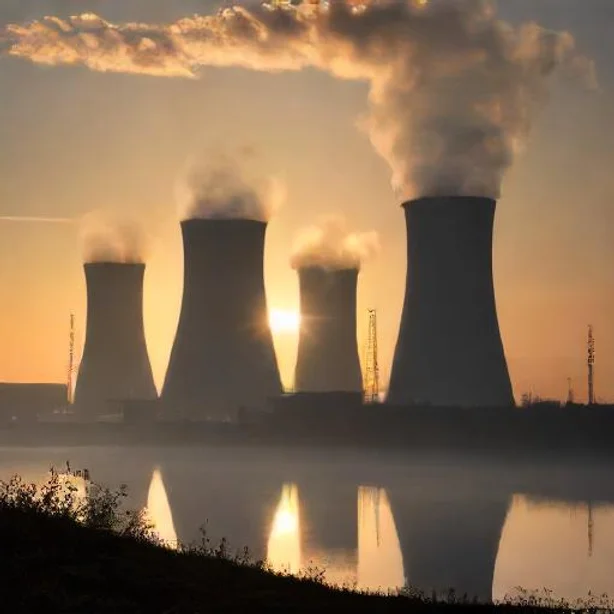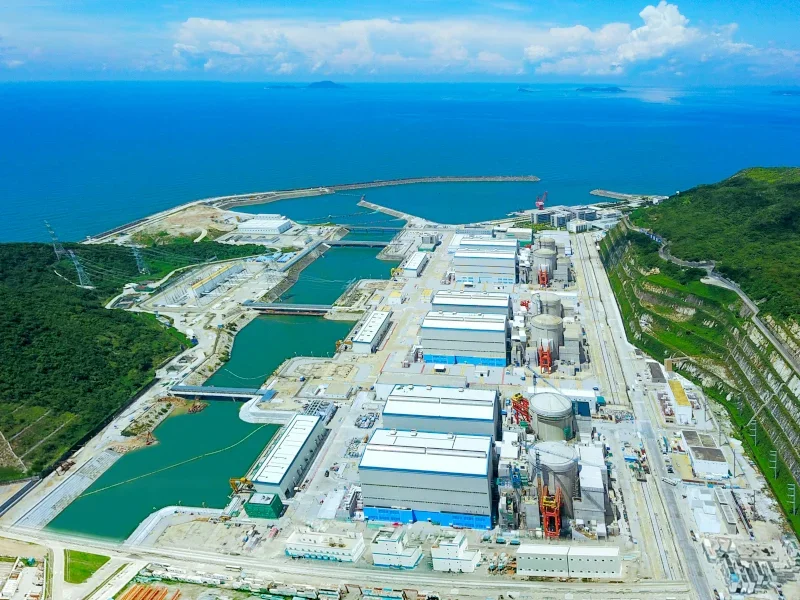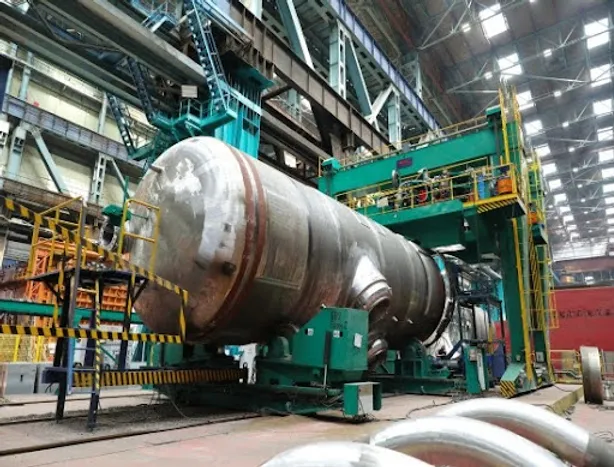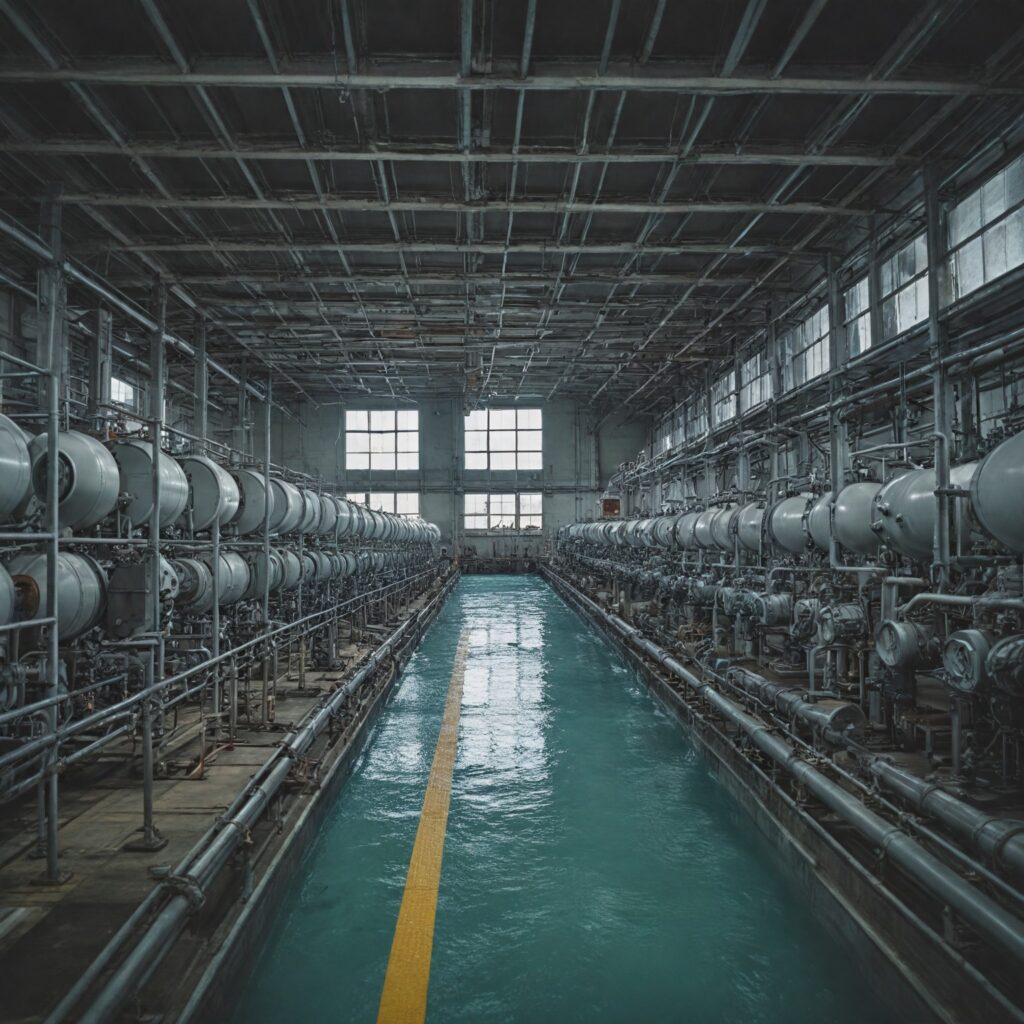Nuclear Industry
Nuclear energy is a clean source of power or electricity and contributes up to 10% of the total electricity produced worldwide. If accepted, it can help to lower power sector CO2 emissions together with renewable sources in those countries and provide some additional security for electricity supply due to being dispatchable. It is also quite used as an alternative in the generation of low-emission heat and hydrogen.

World Wide Overview
With 407 operating nuclear reactors and 62 under construction currently, nuclear energy must be included as part of the electricity production for over 50 years, in which it has helped avoid about 70 Gigatonnes of CO2 emissions worldwide by displacing coal, gas, and oil. The absence of nuclear energy in the generation mix would have meant that global CO2 emissions of the power sector would have been 60 gigatonnes higher, with a lion’s share for the United States and the member countries of the European Union. Over the last decade or so, emerging markets and developing economies especially China and India have turned to nuclear power generation to partly help cut CO2 emissions, now having cumulatively cut emissions by about 9 gigatons.
In 2022, nuclear power plants capacity globally increased to some extent of 1.5 GW, which reflects an increment of 0.3% year-on-year increase. This was due to the fact that new capacity addition outstripped retirement of over 6 GW. EMDEs were responsible for about 60 percent of new capacity addition while over half of the retirements took place in the advanced economies of Belgium, UK, and the United States. In the same context referring to the Net Zero Scenario, global nuclear capacity needs to expand by roughly 15 GW per year (slightly more than 3% annually) by the year 2030 to retain about ten percent of the global electricity generation. This should happen in both advanced economies and EMDEs. Therefore, focusing on the lengthening of the operational durations of existing plants in the G7 countries would enhance the existing low emission assets to help to build new nuclear generation capacities to the total amount.
Growth in Asia
Asia has emerged as one of the fastest-growing regions in nuclear energy, acknowledging its crucial role in meeting the continent’s growing energy demands besides the challenges of climate change. Many Asian countries have already turned to nuclear energy as a viable way of reducing their carbon intensity. Currently, Asia has approximately 140 working nuclear power stations, and among them, 5 are working for more than 40 years. Also, now, 30-35 reactors are under construction, and it is expected that construction of 40- 50 reactors will start in the near future.
Last year, East Asia’s population was estimated at 1.6 billion, representing about 20% of the global population, which reflects a rise from 3.8 trillion tons of oil equivalent (toe) energy consumption in 2022 to 4.4 trillion toe in 2023. This rise in energy demand is as a result of economic development and growing population in most countries. China, Korea and Japan serve as examples of countries, rapidly developing their nuclear powers, regarding nuclear energy as an effective measure in satisfying energy demands and, therefore, also combating climate change.
China has committed itself to reaching the factor of carbon neutrality by 2060. To back this up, in 2022, the National Development and Reform Commission and the National Energy Administration released the “14th Five-Year Plan for the Modern Energy System”. The climate target that South Korea has committed to is to be carbon neutral by 2050. At present, 24 nuclear power plants are contributing 27 % of the total electricity being used in the country. In order to strengthen its energy capacity, four nuclear reactors are being built and aims to build six more of them by the year 2030. According to the estimates by MOTIE, nuclear energy is forecasted to take a share of 34.6 % of South Korea’s general electric power output by 2036 rising from 27.4% in 2021. After the Fukushima attack Japan’s nuclear energy program experienced a setback due to security reasons of the public, but gearing up again Japan aims to achieve the goals of carbon neutrality by 2050 and a 46% reduction in greenhouse gas emissions in fiscal 2030, utility companies have applied for restarting 27 reactors in the last ten years. Out of which seventeen have passed safety checks and only 10 have resumed operation.

Countries like China and South Korea, have made great advancements in developing nuclear technology. Such advances have enabled them to construct modern reactors meeting unique requirements; therefore, they are at the forefront. Establishing their proficiency and creativity on the global stage, both nations have started supplying the newly developed nuclear technology manufactured domestically to other countries, proving Asia’s rise on the world nuclear stage.
The Southeast Asia population is projected to be about 679 million in 2023, or about 8 percent of the world’s total population. At the same time, the consumption of energy in the specified region is going to increase from 1.5 trillion tonnes of oil equivalent (toe) in 2023 to 2.3 trillion toe by 2040. Countries like Indonesia and the Philippines are considering nuclear energy as part of their energy transition strategies, viewing it as an effective solution to meet energy demands and lower their carbon emissions.
As per estimations South Asia’s population was to hit 2 billion in 2023 and effectively account for a quarter of the world’s population. While that is the case, Central Asia is undergoing an enormous potential for energy demand. Thus, the energy demand in South Asia on average has risen by over five percent per Annum for the last twenty years and it may double by 2050. Currently, the nations such as India, Pakistan, and Bangladesh, for example, are building their nuclear arsenal. Furthermore, Sri Lanka has plans for introduction of nuclear energy into the country’s energy mix as the government has begun to view it as a viable option in the energy transition processes since it is both efficient in energy supply and proven to curb the emission of carbon on the environment.
Emerging India
India aims to achieve net-zero emissions by 2070. For this process to happen, the country aims for nuclear contribution to increase from the current 3.1 percent of electricity generation blueprint of the country from nuclear energy. to 9% by 2047. The already installed nuclear power capacity turns into 7,380 MW and it may reach to 22,480 MW by the year 2031 depending on the progressive commissioning of the under construction and sanctioned projects.

India started its Atomic Energy Establishment at Trombay near Mumbai in 1957, which is presently known as Bhabha Atomic Research Centre. Further, in 1964, the detailed project for planning of the first Pressurised Heavy Water Reactor (PHWR), had been finalised. Based on a cannulation commissioned from the Douglas Point reactor in Canada, the first prototype of Rajasthan 1 was constructed with the financial and managerial support of Atomic Energy of Canada Ltd (AECL) and (NPCIL) Nuclear Power Corporation of India Limited. Russia has been one of India’s prominent sources of nuclear fuels since the early 1990 era. After the Nuclear Suppliers Group (NSG) had granted a waiver enabling India to engage in international nuclear commerce in September 2008, India has signed bilateral agreements on civilian nuclear energy technology cooperation with France, the United States, the United Kingdom, Canada and South Korea. India also has uranium supply deals with Russia, Mongolia, Kazakhstan, Argentina and Namibia. In March 2011, Atomic Minerals Directorate for Exploration and Research (AMD) of India announced that it has identified large reserves of uranium in Tummalapalle belt in Andhra Pradesh and Bhima basin in Karnataka but in the recent years India has the shown keen interest in thorium fuels and fuel cycles as thorium is about 518000 tonnes available in the form of monazite in the beach sand while the low graded uranium available is only 92000 tonnes.
The Department of Atomic Energy (DAE) and NPCIL had envisioned achieving 20,000 MWe by 2020. The XI Plan proposed setting up eight indigenously designed 700 MWe PHWRs and importing 109 Light Water Reactors of about 1000 MWe each. By July 2017, eight reactors, totalling 2400 MWe (gross) of nuclear capacity, were fueled by indigenous uranium and operating close to their rated capacity. Fourteen units (4380 MWe gross) under safeguards were operating at rated capacity on imported uranium. However, in March 2018, the government announced that nuclear capacity would fall well short of its 63 GWe target outlined in the five-year plan. The total nuclear capacity is now expected to be about 22.5 GWe by 2031.
Additional Benefits
There is lesser known awareness around the uses of nuclear technology besides its utilisation in power stations. Radioisotopes application, nuclear process heat, and mobile power reactors are vital in various sectors, including consumer items, food and agriculture, industry, health care, research, transport, water and environment.
Isotope is a variant of a chemical element having the same atomic number with a different number of neutrons in the nucleus. The former are known to be stable isotopes that do not change over a certain period of time while the latter are known to be unstable isotopes or the radioisotopes that change their state of nucleus over time and emit alpha and beta particles. Such characteristic isotopes are what people call ‘radioisotopes.’ Everywhere in modern society, these kinds of naturally decaying atoms turn out to be quite useful. The major global suppliers of isotopes are Mallinckrodt Pharmaceuticals based in Ireland, MDS Nordion Canada, IRE in Europe, NTP in South Africa, Isotop-NIIAR of Russia and ANSTO of Australia. Most medical radioisotopes produced in nuclear reactors come from a relatively small number of research reactors, like HFR at Petten in Netherlands (supplied via IRE and Mallinckrodt), BR-2 at Mol in Belgium (supplied via IRE and Mallinckrodt), Maria in Poland (supplied via Mallinckrodt) and a few others.
AGRICULTURE AND FOOD
Plant Mutation
An example of plant breeding technique is through the use of mutation, this is done by exposing seeds or cuttings of a plant to a source of radiation for instance gamma rays. The material is then grown and developed into plantlets which are then chosen and reproduced if it has some preferred features after being exposed to the irradiation. These traits are identified using molecular markers which is also known as marker assisted selection or molecular-marker assisted breeding. Saying this, it needs to be mentioned that this method of radiation affects the process of spontaneous mutation of the given genetic material and accelerates it many times. Amidst countries that use plant mutation breeding, socio-economic advantages have mostly been realised. For example, in Bangladesh through mutation breeding approaches of new rice varieties the crop yield has tripled over the period of last few decades. In periods of high population density, for example in South Asia in general and Bangladesh in particular, nuclear methods have helped feed the population and enhance people’s quality of life.

Insect Control
Losses caused by insect pests to crops when estimated are usually high. Unfortunately, even though there is general utilisation of insecticides, projected world losses are at 10% and are likely to be even higher, especially in developing countries. One method to reduce insect damage in agriculture is to use genetically modified crops, which require much less insecticide. The second strategy is to regulate the populations of these insects directly. Techniques such as the Sterile Insect Technique (SIT) use radiation as a tool to help reduce the insect populations. SIT involves rearing large populations of insects, sterilising them via irradiation (gamma or X-rays), and then releasing them into natural populations. Although the sterile insects remain sexually competitive, they cannot produce offspring. Originally, SIT was introduced in the USA, and it has been used successfully for more than 60 years with contemporary application in six continents. It has been successful in regulating several large pest insects in particular mosquitoes, moths, screwworms, tsetse flies, and different fruit flies like, Mediterranean Fruit fly, Mexican Fruit fly, oriental fruit fly, and Melon fly.
Food Irradiation
Food irradiation is a process in which irradiation by gamma rays is used to kill bacteria infective for leading food borne diseases and enhance shelf life of perishable products. The usage of irradiation technology for the preservation of food is continuously on the rise across the globe, over sixty countries across the world have set down regulations, which make it legal to use irradiation on food items. Apart from the preservation of food and products from getting spoiled, the use of irradiation aids in the reduction of the ripening of fruits or vegetables hence its effect on the shelf life. The non-harming nature to pests and the quantum reductions in the time that food may be quarantined has made food irradiation normal in so many countries.
HEALTHCARE
Diagnosis and Therapy
Nuclear medicine aids physicians in diagnosing, assessing, and in some cases, treating diseases such as cancer, heart disease, gastrointestinal and endocrine disorders and disorders of the nervous system. These tests help determine the health condition of the cells in the human body. SPECT imaging instruments and PET scans provide three-dimensional (tomographic) images of the patient’s body, SPECT scans are primarily used to diagnose and track the progression of heart disease, such as blocked coronary arteries and also to detect disorders in bone, gall bladder disease and intestinal bleeding. The major purpose of PET scans is to detect cancer and monitor its progression, response to treatment, and to detect metastases. The most commonly used diagnostic radioisotope is technetium-99m, which has a half-life of six hours and administers a very low radiation dose to the patient. This makes it ideal for tracing various bodily processes with minimal discomfort for the patient. Nuclear medicine is also used in therapy processes. In its operation, the most frequently used radioactive iodine is in a small dose of I-131 to treat cancer and other organic diseases of the thyroid gland. Cancerous growths are highly sensitive to radiation damage, which can be delivered externally with gamma beam from a cobalt-60 source, or internally with a small gamma or beta radiation source. Long course fractionated radiotherapy is gradually replaced by a short-range radiotherapy technique, brachytherapy. Most treatments given in treating illnesses are considered to be curative, oftentimes with a focus on the alleviation of pain.

Sterilisation
Hospitals use gamma radiation to clean delicate medical items and associated apparatus like syringes, gloves, apparel, and instruments that cannot be cleaned with heat sterilisation. Today, many medical products are treated with gamma rays from a cobalt-60 source because this manner of sterilising is cheaper and more effective than steam heat sterilisation. Syringes used these days are some of the examples of articles that may be sterilised through the use of gamma rays. Due to the fact that radiation is a ‘‘cold’’ process, it is common in sterilisation of heat sensitive items such as powders, ointments, solutions and biological preparations such as bone, nerve, skin used in tissue grafts. The advantages of radiation sterilisation are significant: it is less risky, economical, and a process that can be done after packaging; which provides a fairly close to infinite shelf life for the sterile product so long as the packaging is not compromised. Among syringes, other medical products, which are sterilised by radiation, include cotton wool, burn dressings, surgical gloves, heart valves, bandages, plastic and rubber sheets, and surgical instruments.
INDUSTRIAL USES
Desalination
An insightful study conducted by the UN’s International Atomic Energy Agency (IAEA) in 2006 established that 2. 3 billion people were affected by water stress; the figure was split fifty-fifty between those residing in regions with absolute water shortage and those inhabiting countries characterised by water scarcity. 7 billion out of the population having access to less than 1,000 m3 of potable water per year. These numbers have most probably grown with population all these years. Majority of today’s processes use fossil energy meaning that they increase greenhouse gas outcomes. Global desalination output was expected to grow to 126 million cubic metre per day in 2020. A Global Clean Water Desalination Alliance was formed during the climate talks in Paris, COP 21 in December, 2015 with 17 members demanding for utilisation of clean energy for new desalination plants. They include this one, which focuses on the water-energy connection and the fight against climate change. The viability of the integrated nuclear desalination plants has been established with over 150 reactor-years of the accumulated experience mainly from Kazakhstan, India and Japan. The large-scale commercial deployment of nuclear desalination will depend on the economic aspects only and the costs assessed tentatively lie in 70-90 US cents per cubic metre that makes nuclear desalination comparable to the existing fossil-fuelled nuclear plants in the same area.

Inspection
Manufacturers employ radioisotopes as probes to measure the mobility of fluids and filter products, locate cracks, and evaluate the wearing away or rusting of car engines and facilities’ equipment. By incorporating small amounts of radioactive substances into materials used in various processes, it is possible to study the mixing and flow rates of liquids, powders, and gases, and to identify leaks. Radioactive materials are also used for the purposes of inspecting metal parts and the quality of welds by many industries. Gauging by the help of radioisotopes finds wide application in the production of thin wares from metals, textiles, paper and plastics. Also, density gauges are used in applications where it is important to constantly monitor and regulate a liquid, powder, or solid causing a change in the density in the process; for instance, in production of detergents.
Oil Extraction
From roughly 2003, there have been a number of plans to use nuclear energy for the generation of steam to help extract oil from the northern tar sands of Alberta and for electricity needed to support huge development in the area. In February 2009. Canadian Energy Research Institute (CERI) unveiled a study showing that incorporation of nuclear energy with (yet unrealized) carbon capture and storage in production and refining of oil from tar sands may actually result in emissions favourable than conventional crude. The CERI report also considered the case of very large nuclear power plants producing 1600 MWe and several very small nuclear reactor plants of 10 MWe each. Another more recent plan is by the Canadian based Terrestrial Energy planning around its IMSR – Integral Molten Salt Reactor. As for this proposal, it would provide consideration to 300 MWt units that would produce steam for application. The only key difference in the processes of producing natural gas and nuclear steam generation is that the process of nuclear steam generation is a fuel-sparse process in return for a capital-sparse process that makes no carbon emissions whatsoever.

Consumer Products
Many products consumed in the modern world entails the incorporation of minute portions of radioactive materials. Smoke detectors, watches, clocks, non-sticks materials, and the likes all incorporate the natural aspects of radioisotopes into their creation. Nowadays, one of the most widely used applications of radioisotopes is in ordinary smoke detectors. These devices store a miniscule quantity of americium-241, a decay product of plutonium-241 which stems from nuclear reactors. The Am-241 emits alpha particles that cause ionisation of the air with the creation of a current between two electrodes. ‘When smoke deposits on the detector, it impedes the flow of current by stopping the alpha particles hence causing the alarm.’
Conclusion
Finally, it can be stated that over the course of the future several years, the nuclear industry is expected to play an unexpectedly important role in several branches. In the sphere of energy production, nuclear technology is able to present a solution that is both low-emission and secure, in other fields it offers the opportunity to facilitate significant progress in the diagnostics and treatment of diseases, increase the productiveness of agriculture and increase the effectiveness of food preservation. Thus, as the technology progresses and the safety measures are improved, the role of nuclear applications for sustainable development and for the enhancement of the quality of life grows even more important. Accepting these changes as the customary trend would be crucial in meeting the energy health and environmental demands of the future.
